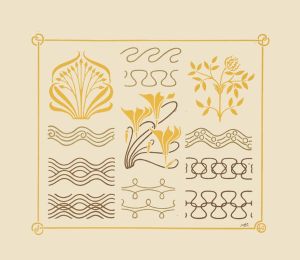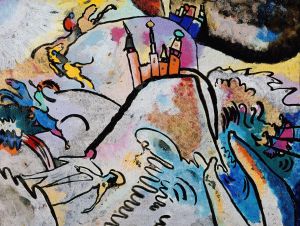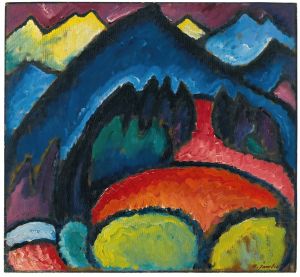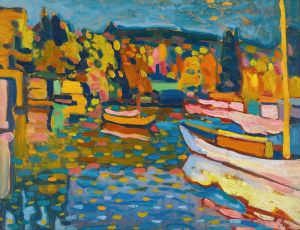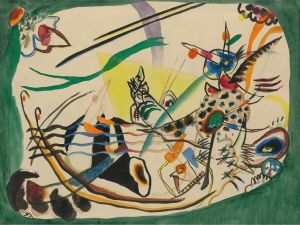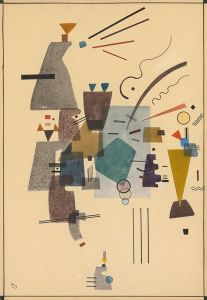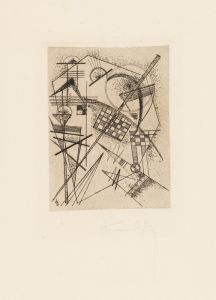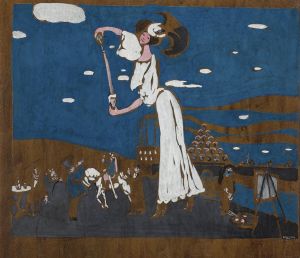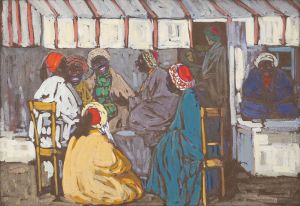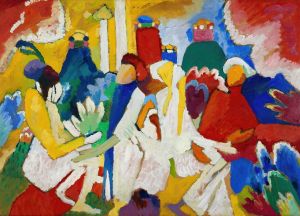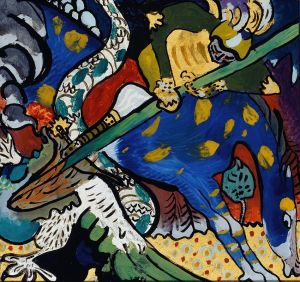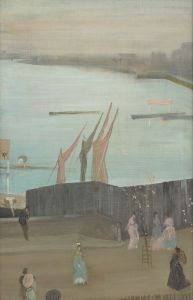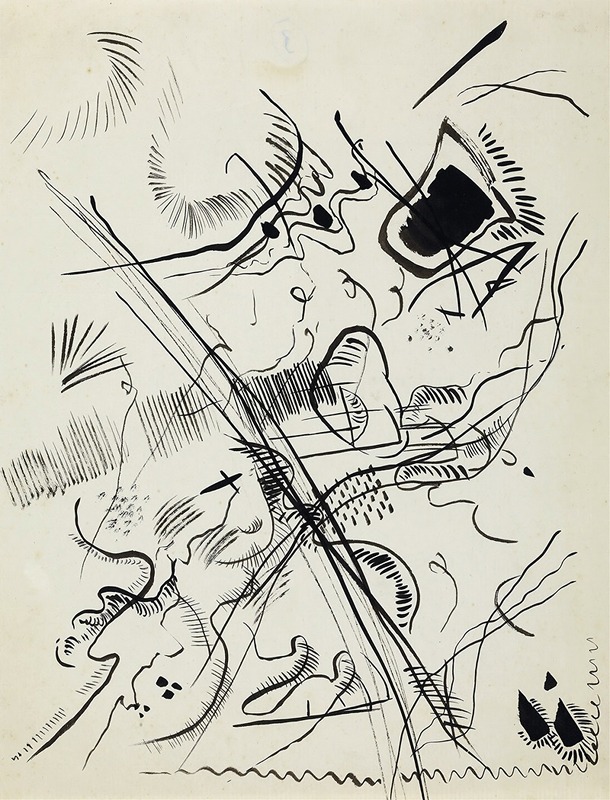
Untitled
A hand-painted replica of Wassily Kandinsky’s masterpiece Untitled, meticulously crafted by professional artists to capture the true essence of the original. Each piece is created with museum-quality canvas and rare mineral pigments, carefully painted by experienced artists with delicate brushstrokes and rich, layered colors to perfectly recreate the texture of the original artwork. Unlike machine-printed reproductions, this hand-painted version brings the painting to life, infused with the artist’s emotions and skill in every stroke. Whether for personal collection or home decoration, it instantly elevates the artistic atmosphere of any space.
Wassily Kandinsky, a pioneering figure in abstract art, created numerous works throughout his career, many of which remain untitled. One such piece, commonly referred to as "Untitled," exemplifies his innovative approach to form, color, and composition. Kandinsky, born in Moscow in 1866, initially pursued a career in law and economics before turning to art at the age of 30. His move to Munich in 1896 marked the beginning of his formal art education and his eventual rise to prominence in the art world.
Kandinsky's "Untitled" works are often characterized by their abstract nature, eschewing representational forms in favor of geometric shapes, vibrant colors, and dynamic compositions. These elements reflect his belief in the spiritual and emotional power of art, a concept he explored extensively in his writings, including his seminal book "Concerning the Spiritual in Art" (1911). In this text, Kandinsky articulated his theory that colors and forms could evoke specific emotions and spiritual responses, independent of any representational content.
Throughout his career, Kandinsky was associated with several influential art movements and groups. He was a founding member of the Munich-based group Der Blaue Reiter (The Blue Rider), which sought to promote modern art and emphasize the spiritual in artistic expression. The group's first exhibition in 1911 included works by Kandinsky, as well as other notable artists such as Franz Marc, August Macke, and Gabriele Münter. Der Blaue Reiter played a crucial role in the development of abstract art and laid the groundwork for many of Kandinsky's later works.
Kandinsky's "Untitled" pieces often feature a combination of bold, contrasting colors and intricate, interwoven lines and shapes. These compositions create a sense of movement and rhythm, drawing the viewer's eye across the canvas and inviting them to engage with the work on a deeper, more intuitive level. The artist's use of color was particularly significant, as he believed that different hues could evoke specific emotions and sensations. For example, he associated blue with spirituality and calm, while yellow represented energy and warmth.
In addition to his contributions to painting, Kandinsky was also an influential teacher and theorist. He taught at the Bauhaus, a renowned German art school, from 1922 until its closure in 1933. During his time at the Bauhaus, Kandinsky continued to develop his ideas about the relationship between art and spirituality, and his teachings had a lasting impact on his students and colleagues.
Kandinsky's legacy as a pioneer of abstract art is well-established, and his "Untitled" works remain an important part of his oeuvre. These pieces exemplify his innovative approach to art-making and his commitment to exploring the emotional and spiritual potential of color and form. Today, Kandinsky's works can be found in major museums and collections around the world, including the Solomon R. Guggenheim Museum in New York, the Centre Pompidou in Paris, and the Städtische Galerie im Lenbachhaus in Munich.
In summary, Wassily Kandinsky's "Untitled" paintings are a testament to his groundbreaking contributions to abstract art. Through his innovative use of color, form, and composition, Kandinsky sought to evoke emotional and spiritual responses in his viewers, leaving a lasting impact on the art world and solidifying his place as one of the foremost artists of the 20th century.






